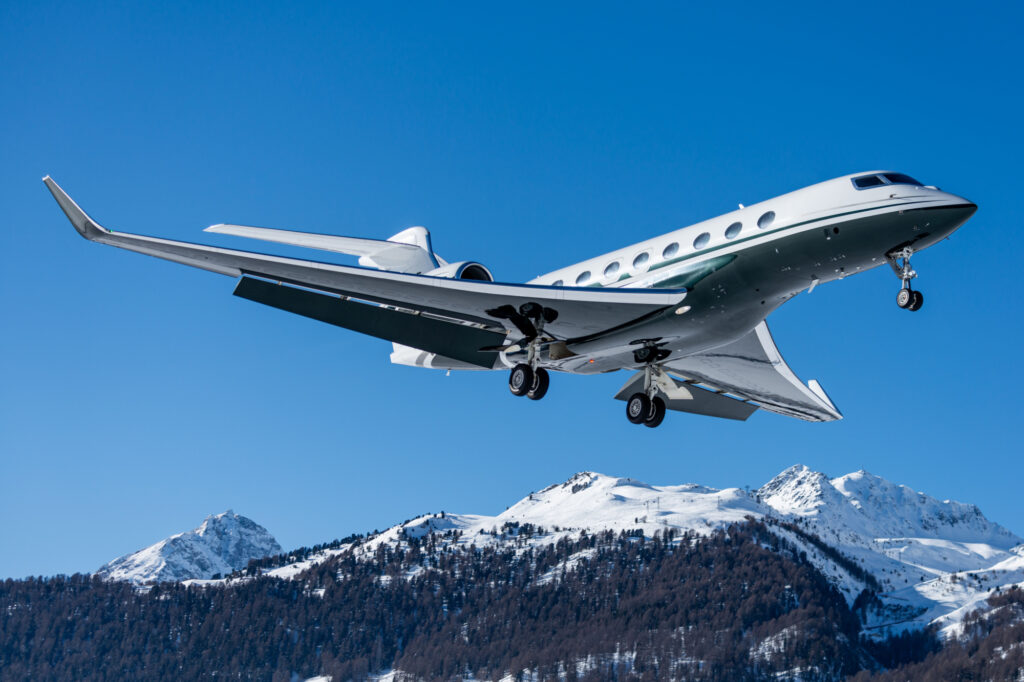When it comes to jet travel, speed is a crucial consideration. The ability to accurately measure and calculate jet speed is essential for a variety of reasons, including safety, performance evaluation and operational planning.
This article will delve into the methods used to measure and calculate jet speed, along the way exploring concepts such as Mach, knots, sonic speed, and sonic booms.
What is a Mach?
The Mach number is a dimensionless unit used to express the speed of an object relative to the speed of sound in the surrounding medium. It provides a standardized way of quantifying jet speed.
How is it calculated?
To calculate the Mach number, the actual speed of the aircraft is divided by the local speed of sound. For instance, if an aircraft is flying at 400 meters per second and the local speed of sound is 343 meters per second, the Mach number would be approximately 1.17 (400/343).
How much is Mach 1?
Mach 1 is the point at which an object is traveling at the same speed as the sound waves it produces.
At sea level and an average temperature of 20 degrees Celsius (68 degrees Fahrenheit), Mach 1 is approximately 343 meters per second (1,125 feet per second) or 1,235 kilometers per hour (767 miles per hour).
As altitude increases the speed of sound decreases, due to lower air density and temperature, causing Mach 1 to decrease accordingly. Therefore, it is important to note that the speed of sound is not constant and can vary depending on factors such as temperature and altitude.
What is a knot?
A knot is a unit of speed commonly used in aviation and maritime contexts. It is equivalent to one nautical mile per hour and is abbreviated as ‘kt’ or ‘kn’. One nautical mile is equal to 1.852 kilometers or 1.151 statute miles.
How is it calculated?
To calculate the speed in knots, the distance traveled in nautical miles is divided by the time taken in hours. For example, if an aircraft covers a distance of 500 nautical miles in two hours, the speed in knots would be 250 knots (500/2).
What is sonic speed?
Sonic speed, also known as supersonic speed, refers to speeds greater than the speed of sound. When an object such as a jet aircraft exceeds Mach 1, it is said to be traveling at sonic or supersonic speed.
At supersonic speeds, there are changes in both the air’s behavior and the aircraft’s aerodynamics. Special design considerations are necessary to ensure stability and control, manage the effects of shockwaves, and minimize drag and other performance limitations associated with high speeds.
What are sonic booms?
A sonic boom is an acoustic phenomenon that occurs when an object moves through the air at a velocity exceeding the speed of sound. As the object surpasses Mach 1, it generates shockwaves that compress the air, resulting in a distinctive explosive sound known as a sonic boom.
The sonic boom is characterized by a sudden and sharp increase in air pressure, followed by a very rapid decrease. The shockwaves radiate outward in a cone shape from the object, creating a loud noise that can be heard as a powerful thunderclap or explosion on the ground.
Sonic booms are often associated with supersonic aircraft, such as fighter jets or the Concorde, which were capable of flying at speeds greater than Mach 1. When these aircraft break the sound barrier, they produce intense shockwaves that propagate for miles around, causing the sonic boom to be heard on the ground.
The exact sound and intensity of a sonic boom depends on various factors, including the size and shape of the aircraft, its altitude and the atmospheric conditions. The sonic boom is typically described as a double ‘boom’ sound, because the shockwaves from the front and rear of the aircraft reach the observer at slightly different times.
Due to the disruptive nature of sonic booms, concerns have been raised about noise pollution, structural damage to buildings, and potential harm to humans and animals. As a result, regulations are in place to limit supersonic flight over populated areas to minimize the impact of sonic booms.
In recent years, efforts have been made to develop quieter supersonic aircraft technologies that can reduce or eliminate the sonic boom effect. These advancements aim to make supersonic travel more feasible and socially acceptable by mitigating the negative effects associated with sonic booms.

